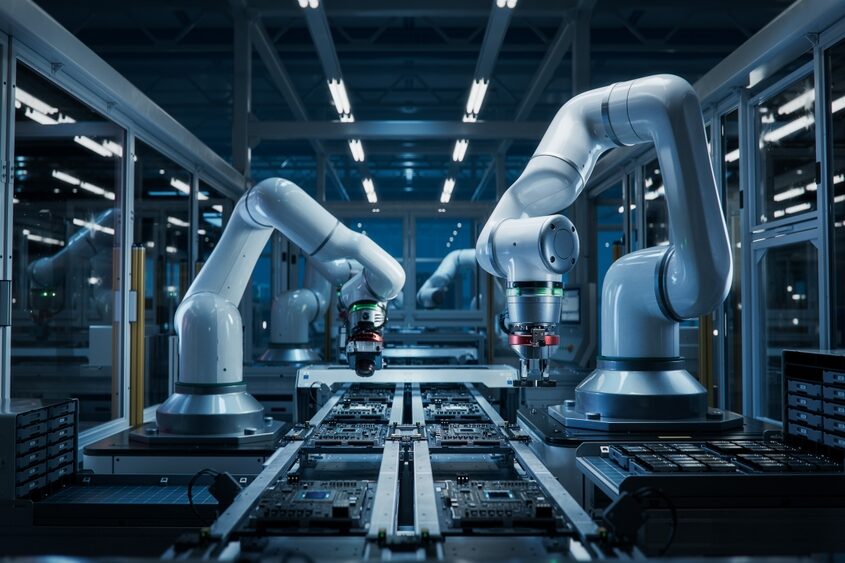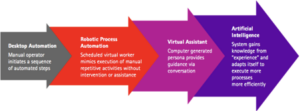
Enterprises are under incredible pressure to innovate, reduce costs, and increase revenue and market share. And that pressure is coming from all directions.
CEO turnover has reached a record high, according to Strategy&, formerly Booz. In 2015, 17% of the globe’s largest public companies saw their CEO leave, which is more than in any of the previous 15 years. Of those that left, 10.9% were planned, 3% were forced and 2.8% attributed to M&A. Some of this is the baby boomers retiring but there is heightened pressure. CEOs being fired over ethical violations alone was 5.3% from 2012 to 2016.
In some cases, the leader at the top is aware of performance or ethical issues but there are also cases where leadership is blindsided.
How can automation help? Automation can help with compliance, transparency, accountability and identification of irregularities.
Organisations are confronted with significant pressures to embrace and optimise digital transformation. Many, including yours, have likely engaged firms such as McKinsey or Bain, who have more or less told you the same thing: Your company has to become more digitised in order to avoid becoming a commoditised business and lose market share. Your organisation has to move along the digital transformation curve.
One of those digitisation trends is AI. AI is often referred to as the electricity of the Fourth Industrial Revolution. But for AI to work, you need data. Lots of it. More specifically the 3Vs – volume, variety and velocity. That’s where the Internet of Things comes in. It allows for quantification of your entire value chain on a real-time basis to feed your AI algorithms.
But here’s the reality. The allure of AI and IoT are compelling, no question about that. But when organisations come back from conferences and conduct an introspection, they often find that they are not ready for primetime. Questions come up, such as does it mean we have to sunset our legacy systems and put in shiny new stacks? Do we need to invest millions to create a new data architecture and data analytics infrastructure? Do we have to change our business processes? Will employees resist the change? Do they even have the right skills? Do we need to hire an army of data scientists and AI engineers or depend on expensive outside consultancy?
Similarly, no matter how great new technologies such as AI and IoT are, unless we can adapt them to your organisations in a way that your company’s IT systems, processes and people don’t reject them, it won’t work.
So how can your organisation cross that chasm?
No matter your current state with all its legacy mess, there is a way to cross over to your desired state. And that’s through robotic process automation (RPA).
RPA can help your business to improve the effectiveness of your processes faster and at a lower cost than current methods.
Sometimes as organisations, we read analyst reports or our consultants pressure you to adopt great new technologies such as AI. But implementing AI is more than consuming API services, using libraries or SDKs. On your side, there are a lot of organisational, structural, financial and mindset changes to overcome.
This chart from Accenture shows you a logical maturity roadmap that can help your organisation grow into AI.

Robotic desktop automation (RDA) and RPA are realistic solutions with high ROI that gets you closer to the promises of AI and IoT.
Some activities are beautifully suited for automation, such as collecting data, processing that data, performing physical activities in predictable environments. 60% of all jobs have at least 30% of activities that are automatable.
RPA is on a growth tear — $1.2 billion to over $3.1 billion by 2021.
RPA is not new. It’s already used by major enterprises globally. The security, software, maintenance, cost and ROI have been well-vetted.
An Everest Group study indicated that 78% of RPA customers responded that their RPA implementation met or exceeded their expectations in terms of return on investment. And nearly one third indicated that it exceeded their expectations. This is profound. We just don’t hear responses like this for most technology investments. What it’s telling us is that the value realised is disproportionately higher relative to the cost and effort to implement and maintain RPA.
In logistics and supply chain, front, middle and back-office operations performed on workstations by human workers can be automated through RPA. This significantly increases the velocity of business processes and workflows while minimising human errors.
Digital transformation isn’t easy. It’s complex, it’s messy, it’s costly. It’s about people change as much as technology change.
RPA provides the economies of scale – it is bringing down the cost of automation and digital transformation towards AI.
AI is more than ML, NLP or computer vision. Much like electricity was transformational, it requires an ecosystem, heavy investment, new skills and capabilities, and new approaches. RPA is that path forward without the risk of heavy upfront CapEx or uncertain outcomes.
Never before is the expected return so certain and the risk profile so well mitigated. RPA rolled out across your enterprise would squarely translate into significant wins for your organisation, and for you. With the microeconomics well laid out, it’s time to scale.

Scott Amyx is an internationally recognised thought leader, venture capitalist, speaker, and author on smart, sustainable cities, exponential technologies, and the Fourth Industrial Revolution. He has appeared or spoken on TV, New York Times, TIME, Forbes, TechCrunch, TEDx, CIO, Washington Post, WIRED, Forrester, G20, European Commission, United Nations, ITU, Pew Research Center, Environmental Defense Fund, and other major media and events.


